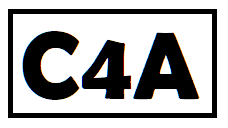Using a conversion tool can significantly simplify the process of switching between binary, hexadecimal, and decimal numeral systems. This powerful tool is designed to be user-friendly and efficient, making it ideal for developers, students, and anyone who needs to work with different numeral formats.
Why Use a Conversion Tool?
Understanding conversions between binary, hexadecimal, and decimal is essential in many fields, including computer science and engineering. A conversion tool helps you change numbers between these formats effortlessly. Whether you’re debugging code, designing hardware, or solving complex mathematical problems, having a reliable tool at your disposal can save you time and reduce errors.
Key Features of Our Conversion Tool
- Instant Conversion: Enter a number in any format, and the tool will instantly display the equivalent values in the other two formats.
- Simple Interface: Easy-to-use interface with clear input fields for binary, hexadecimal, and decimal numbers.
- Responsive Design: Optimized for both desktop and mobile devices, ensuring you can use it anytime and anywhere.
How to Use the Conversion Tool
Using our conversion tool is simple. Just follow these steps:
- Enter a number in the decimal, binary, or hexadecimal input field.
- The tool will automatically display the equivalent values in the other two formats.
- To start over, click the “Clear” button.
Additional Tips
Remember that:
- Binary: Consists of only 0s and 1s.
- Hexadecimal: Uses digits 0-9 and letters A-F (case-insensitive).
- Decimal: Uses standard base-10 numbers.
The Importance of Understanding Numeral System Conversions
Knowing how to convert between numeral systems can help you:
- Write and Debug Code: Essential for programming and software development. Many programming languages use binary and hexadecimal representations for data manipulation and optimization.
- Understand Computer Architecture: Important for low-level programming and system design. Understanding these numeral systems is crucial for tasks like memory addressing and processor operations.
- Solve Mathematical Problems: Useful in various fields of mathematics and engineering. Conversion between numeral systems is often required in algorithm design and problem-solving.
Common Use Cases for Numeral System Conversions
Here are some common scenarios where numeral system conversions are useful:
- Data Representation: In computing, data is often represented in binary form. Converting this to hexadecimal can make it more readable and manageable.
- Memory Addressing: Memory addresses in computers are typically represented in hexadecimal. Understanding how to convert these addresses to binary and decimal can help in debugging and system analysis.
- Networking: Network protocols and configurations often use hexadecimal notation. Being able to convert between these formats can aid in network troubleshooting and configuration.
- Cryptography: Cryptographic algorithms frequently involve binary and hexadecimal operations. Understanding these conversions is essential for implementing and analyzing cryptographic systems.
Understanding the Basics of Binary, Hexadecimal, and Decimal Systems

Before diving into the conversion process, it’s helpful to understand the basics of each numeral system:
Binary System
The binary system is a base-2 numeral system that uses only two symbols: 0 and 1. It is the foundation of all digital computing, as it represents the two states of a binary digit, or bit.
For example, the binary number
Hexadecimal System
The hexadecimal system is a base-16 numeral system that uses 16 symbols: 0-9 and A-F. It is commonly used in computing because it provides a more compact representation of binary numbers.
For example, the hexadecimal number
Decimal System
The decimal system is a base-10 numeral system that uses ten symbols: 0-9. It is the most commonly used numeral system in everyday life.
For example, the decimal number
Reading the remainders from bottom to top gives the binary number
Conversion Formulas
Binary to Decimal
where \(b_i\) is the \(i\)-th bit in the binary number.
Decimal to Binary
Repeated division by 2, recording the remainders.
Binary to Hexadecimal
Group binary digits into sets of four, then convert each group to its hexadecimal equivalent.
Hexadecimal to Binary
Convert each hexadecimal digit to its 4-bit binary equivalent.
Hexadecimal to Decimal
where \(h_i\) is the \(i\)-th digit in the hexadecimal number.
Decimal to Hexadecimal
Repeated division by 16, recording the remainders.
Examples
Example 1: Binary to Decimal
Convert
Example 2: Decimal to Binary
Convert
Reading the remainders from bottom to top gives the binary number
Example 3: Binary to Hexadecimal
Convert
Group into sets of four:
Convert each group:
Result:
Example 4: Hexadecimal to Binary
Convert
Convert each digit:
Example 5: Hexadecimal to Decimal
Convert
Example 6: Decimal to Hexadecimal
Convert
Reading the remainders from bottom to top gives the hexadecimal number
Contact Us
Follow us on Facebook: Facebook Profile
Email us at: office@calculator4all.com
Conclusion
Mastering conversions between binary, hexadecimal, and decimal numeral systems is a fundamental skill in many technical fields. With our powerful conversion tool, you can quickly and accurately perform these conversions. Try it out today and enhance your understanding of numeral systems. Whether you’re a seasoned developer or just starting out, this tool will be an invaluable resource in your toolkit.
